How AI is learning to build its own conceptual frameworks
For decades, knowledge representation has been a foundational challenge in artificial intelligence. Traditional approaches required human experts to meticulously craft ontologies and knowledge graphs before these structures could be populated with information. This manual process created a bottleneck that limited the application of symbolic knowledge systems to narrow domains where the investment in knowledge engineering could be justified.
The emergence of Large Language Models (LLMs) promised to change this equation by automatically extracting information from text. However, while LLMs excel at generating natural language, they struggle with producing the consistent, structured outputs needed for reliable knowledge systems.
A new paradigm is emerging at this intersection: agentic symbolic knowledge generation — systems that can autonomously reason about knowledge structures, propose new organizational frameworks, and evolve their understanding over time.
Traditional knowledge graph construction follows a rigid pattern:
- Domain experts define an ontology
- Engineers implement extraction rules based on this ontology
- Systems process documents according to these fixed rules
- New domains require starting the process from scratch
This approach creates significant barriers to adoption, as organizations must invest heavily in upfront knowledge engineering before seeing any return on investment.
Recent innovations show a different path forward. Systems like those implementing dynamic ontology selection can analyze document content, compare it against existing ontological structures, and decide which ontology to apply — or propose entirely new ones when nothing suitable exists.
This represents a fundamental inversion of the traditional workflow. Rather than knowledge structures dictating how we process information, the information itself guides the development of knowledge structures.
The power of agentic knowledge generation comes from the synergy between neural approaches (primarily LLMs) and symbolic structures (ontologies and knowledge graphs).
LLMs provide the flexibility to process diverse natural language inputs and generate rich semantic interpretations. However, without constraints, they produce outputs that lack the consistency required for knowledge systems.
This is where structured output generation techniques become critical. These range from simple approaches like JSON schema validation with retry loops to sophisticated methods that directly modify token probabilities during generation to guarantee conformity with predefined structures.
The RAKG (Retrieval Augmented Knowledge Graph Construction) framework exemplifies this integration by using LLMs to extract entities and relationships while enforcing structural constraints that maintain knowledge graph integrity. This approach transforms unstructured text into queryable knowledge while filtering out hallucinations through rigorous evaluation frameworks.
What truly makes these systems “agentic” is their ability to make complex decisions through sophisticated workflows. Frameworks like Lang Graph enable conditional processing paths that can:
- Evaluate coverage metrics to determine if an existing ontology adequately captures document content
- Generate new ontological structures when coverage is insufficient
- Incorporate human validation for critical decisions
- Maintain state throughout execution to create coherent processing pipelines
These workflows go beyond simple automation by implementing decision-making processes that would traditionally require human intervention. For example, when encountering a document from a new domain, an agentic system can:
- Extract key entities and concepts
- Compare these against existing ontology catalogs
- Calculate semantic similarity to find the closest matching ontologies
- Assess coverage through quantitative metrics
- Either apply an existing ontology or propose a new one
- Seek human validation when confidence is low
This ability to “reason about reasoning” differentiates truly agentic systems from traditional automation.
Perhaps the most radical concept emerging in this space is the meta-ontology — a “knowledge graph of ontologies” that captures relationships between knowledge structures themselves.
Traditional approaches treat ontologies as isolated artifacts, but a meta-ontological approach recognizes that concepts often span multiple domains with different representations. By modeling relationships between ontologies, systems can:
- Enforce consistent patterns across domains
- Enable inheritance between related ontologies
- Provide structural templates for new ontology creation
- Guide ontology extension based on established patterns
This creates a self-improving ecosystem where knowledge organization principles evolve organically as the system encounters new information. Rather than treating each new domain as a fresh challenge, the system learns to apply and adapt existing conceptual frameworks.
The implications of agentic symbolic knowledge generation extend across industries:
Enterprise Knowledge Management: Organizations can process diverse document collections without predefined mappings for each document type, breaking down information silos that have plagued knowledge management for decades.
Scientific Research: Agentic systems can help integrate findings across disciplines by identifying conceptual parallels that might not be immediately obvious to specialists in any single field.
Content Intelligence: Media organizations can build rich knowledge graphs from their content archives, enabling sophisticated discovery and recommendation systems that understand conceptual relationships.
Regulatory Compliance: Financial and healthcare organizations can automatically extract structured knowledge from regulatory documents, mapping new requirements to existing compliance frameworks.
Future developments will likely focus on several key areas:
- Ontology Evolution: Systems that can not only create new ontologies but update existing ones based on new information.
- Cross-Modal Knowledge: Integrating knowledge extracted from images, audio, and other modalities with text-derived knowledge.
- Collaborative Knowledge Building: Systems that combine machine intelligence with human expertise in more sophisticated feedback loops.
- Temporal Knowledge Representation: Capturing how conceptual relationships change over time rather than representing knowledge as static structures.
Agentic symbolic knowledge generation represents a significant step toward AI systems that don’t just process information but truly understand how knowledge is structured and interconnected.
By combining the flexibility of neural approaches with the precision of symbolic structures, and embedding these within decision-making workflows that can reason about knowledge organization itself, these systems overcome many limitations that have historically confined knowledge-based AI to narrow domains.
The progression from manual knowledge definition toward increasingly autonomous systems promises to make sophisticated knowledge technologies accessible to a much wider range of applications while maintaining the structural integrity needed for reliable reasoning.
As these technologies mature, we may see knowledge systems that not only extract information but actively organize it into coherent conceptual frameworks that evolve over time, potentially leading to entirely new insights that might not be immediately obvious even to human experts.
This could fundamentally change how we interact with accumulated human knowledge, enabling deeper connections between fields and more sophisticated reasoning about complex, multi-domain problems — a significant step toward truly intelligent systems.






